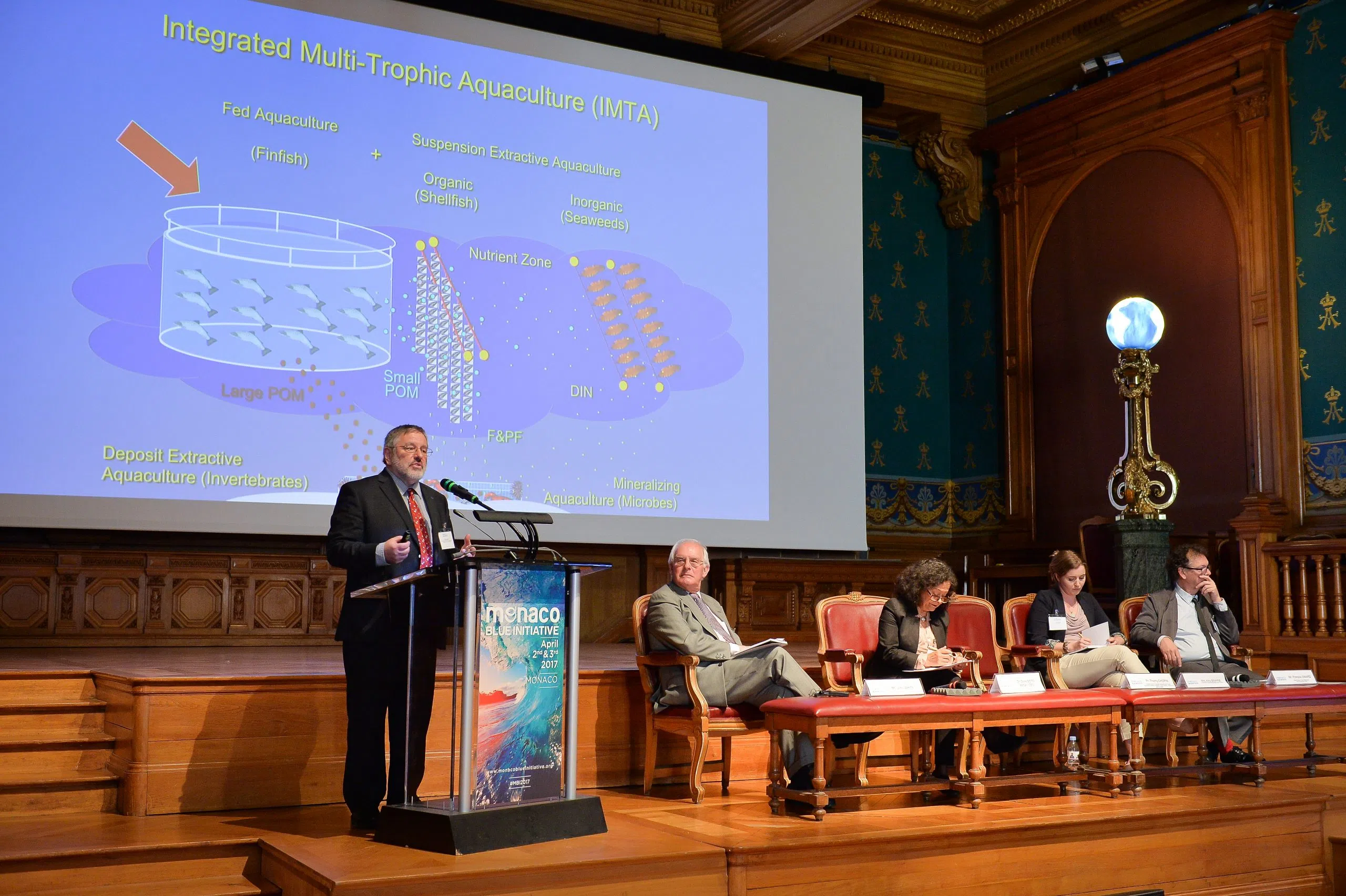Marine protected areas and aquaculture activities like fish, seaweed and shellfish farming don’t have to be mutually exclusive — they can actually co-exist harmoniously according to a University of New Brunswick marine biology professor in Saint John.
Dr. Thierry Chopin is the scientific director of the Canadian Integrated Multi-Trophic Aquaculture Network and he delivered the above message to an audience in Monaco last month at the Monaco Blue Initiative, where members meet to talk about ocean management and conservation.
“We have been working on what we call Integrated Multi-Trophic Aquaculture, so that’s when you combine several types of organisms — fish, seaweeds, invertebrates — because they have complementary functions. Some release nutrients, some absorb nutrients” says Dr. Chopin.
“When you choose the right species also at the right scale…aquaculture can be beneficial to the ecosystem. So when you have a marine protected area that is put in place to protect the ecosystem, yes you can have some activities, you can have aquaculture, you can have fisheries when it’s done properly.”
‘Properly’ seems to be the operative word. Canada has set a goal to protect 5% of its marine and coastal areas by this year but we’re only at around 1%, Dr. Chopin stresses we can’t make rushed decisions just to hit targets. We need a plan to deal with it.
“We have eight months, so what do we do?… Maybe 2017 will not be exactly the time we meet the target but we do a good job and we put something in place that’s making sense,” says Dr. Chopin.
“Or we say ‘oh my god’ we have eight months to meet the targets. So that’s the recipe…to make rushed decisions which generally aren’t very good.’







